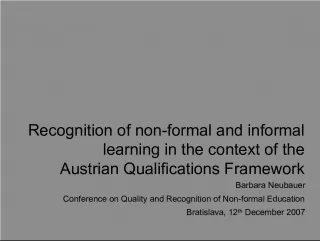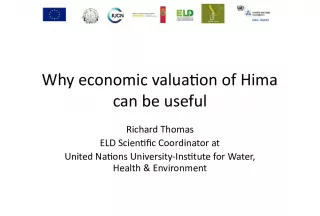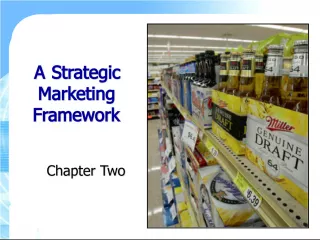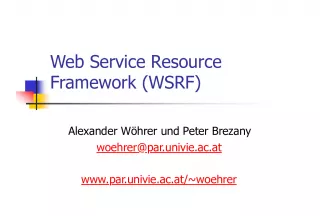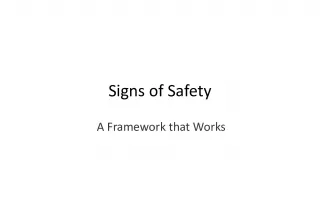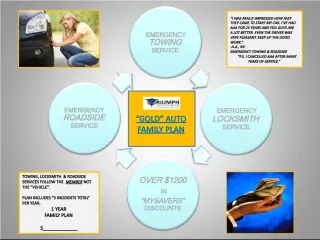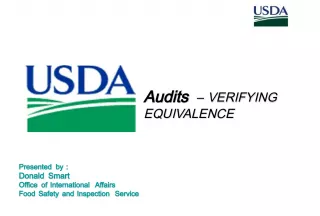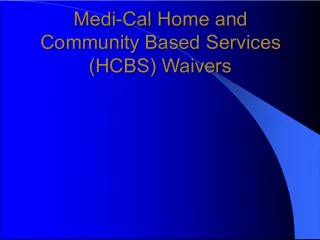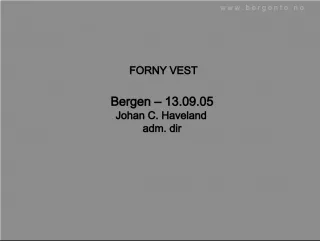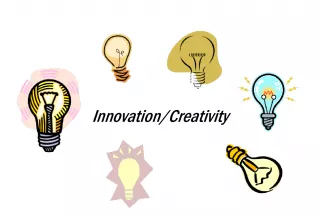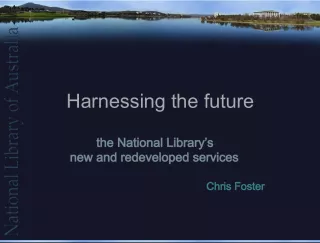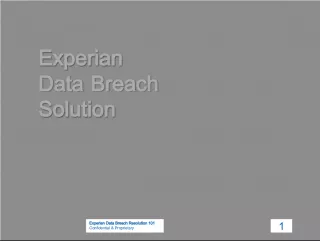The Framework for Inspection of Fostering Services
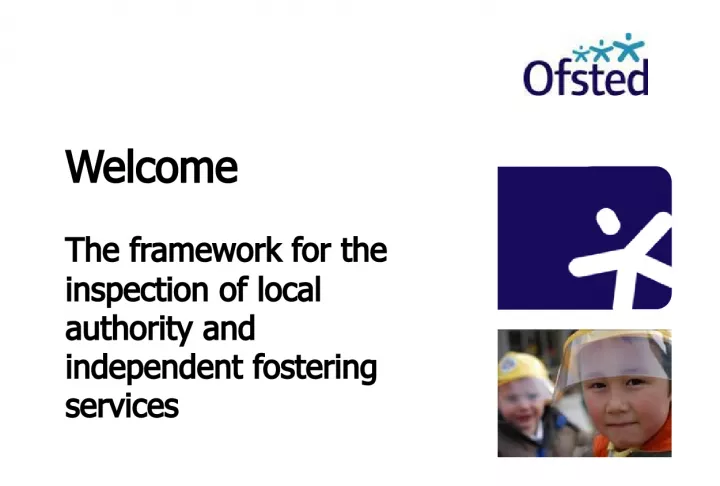

This article discusses the Ofsted Annual Report 2010-2011, which evaluated 102 local authority and independent fostering services. Out of these services, 30 were judged to be outstanding, 51 were judged to be good, 20 were judged to be satisfactory, and 1 was judged to be inadequate. The new outcome-focused framework prioritizes stability of placements, placement with siblings, and involvement of children and young people. This framework helps identify both strengths and weaknesses in practice, and it raises expectations for improving outcomes.
- Uploaded on | 1 Views
-
 eric
eric
About The Framework for Inspection of Fostering Services
PowerPoint presentation about 'The Framework for Inspection of Fostering Services'. This presentation describes the topic on This article discusses the Ofsted Annual Report 2010-2011, which evaluated 102 local authority and independent fostering services. Out of these services, 30 were judged to be outstanding, 51 were judged to be good, 20 were judged to be satisfactory, and 1 was judged to be inadequate. The new outcome-focused framework prioritizes stability of placements, placement with siblings, and involvement of children and young people. This framework helps identify both strengths and weaknesses in practice, and it raises expectations for improving outcomes.. The key topics included in this slideshow are fostering services, Ofsted, annual report, outcome-focused framework, stability of placements, involvement of children, strengths and weaknesses,. Download this presentation absolutely free.
Presentation Transcript
1. Welcome The framework for the inspection of local authority and independent fostering services
2. Ofsted Annual Report 2010/2011 102 fostering services - local authority and independent 30 judged to be outstanding 51 judged to be good 20 judged to be satisfactory 1 judged to be inadequate
3. The new framework: outcome focused: stability of placements placement with siblings involvement of children and young people raises expectations identifies strengths and weaknesses in practice.
4. The inspection of fostering services from April 2012 Inspection framework Evaluation schedule Conducting the inspection
5. The inspection framework and evaluation schedule are based on: the regulations, statutory guidance and national minimum standards early discussions with the sector formal consultation: online and face-to- face meetings pilot inspections. How we have got here?
6. Just make sure that they are doing their job properly, and that they help the children to be the best that they can be.
7. Outcome of the consultation and pilot inspections Children and young peoples experiences should be central to the conduct and findings of the inspections.
8. Outcome of the consultation and pilot inspections 10 days notice of the inspection the fostering data set will continue to be used with an additional section based on regulation 35 and NMS 25
9. Outcome of the consultation and pilot inspections Services judged to be Outstanding will continue to be inspected once in each three- year inspection cycle.
10. Outcome of the consultation and pilot inspections Local authority adoption and fostering inspections will continue to be separate.
11. Outcome of the consultation and pilot inspections Overall support for the proposed judgement areas
12. Questions and answers
13. The inspection framework Judgements: Overall Effectiveness Outcomes for children and young people Quality of the service Safeguarding children and young people Leadership and management
14. The new framework for the inspection of fostering services is trying to achieve: a focus on the experiences and outcomes for children and young people a reduction in the focus on process raised expectations in inspection identification of strengths in the fostering service identification of weaknesses in the fostering service improvements in inspection and consistency.
15. The evaluation schedule: takes into account the national minimum standards and regulations provides grade descriptors for each judgement area to support the inspection process and the identification of an outstanding, good, adequate and inadequate service shows how each judgement is made based on the inspectors evaluation across a number of areas focuses on the detail of what makes most difference to children and young people who are fostered.
16. Outstanding a service of exceptional quality that significantly exceeds minimum requirements Good a service of high quality that exceeds minimum requirements Adequate a service that only meets minimum requirements Inadequate a service that does not meet minimum requirements
17. Outcomes for children and young people The most important outcomes for children and young people who are fostered are that they benefit from stable, appropriate placements and, if in their best interests, they are placed with their siblings. In those placements they: achieve their potential; develop or maintain a positive self- view; make and maintain sound relationships with their family, friends and foster carers, as appropriate; and feel valued and welcomed. Their views influence what is happening to them.
18. The quality of the service The central focus of a fostering service must be the welfare and safety of children and young people who are fostered. This will be achieved by placing children with foster carers who are trained, supported and skilled and who have a positive impact on outcomes for children.
19. Safeguarding children and young people Safeguarding children and young people should be at the centre of all the fostering service does. Children and young people should feel safe and be safe. They should benefit from highly effective safeguards to ensure that unsuitable people do not have unsupervised contact with them. Foster carers should have a clear understanding and effective practice in relation to the potential impact of abuse on a child or young persons development and behaviour, and in relation to disclosures of abuse .
20. Leadership and management Leadership and management should demonstrate clear vision and ambition for children and young people who are fostered. They should monitor all areas of the fostering service, particularly the outcomes children and young people achieve, and demonstrate continuous improvement. Effective partnerships with all those involved with looked after children and young people are essential to deliver the best outcomes. These include partnerships with children and young people themselves, looked after childrens teams, other fostering services, education and health.
21. Overall effectiveness Inspectors will consider the evidence and judgements from across the evaluation schedule before arriving at the overall effectiveness judgement. It summarises: outcomes for children and young people; how the service promotes positive outcomes; and how leaders and managers ensure that outcomes improve
22. Conducting the inspection pre-inspection activity Inspectors will look at: fostering quality assurance and data form and reports under regulation 35 and NMS 25 questionnaires panel minutes previous inspection reports other inspection reports statement of purpose and childrens guide fostering services websites concerns and complaints received notification of significant events received any changes, including change of manager any current or recent enforcement activity other intelligence.
23. Conducting the inspection 10 days notice No routine observation of panel No visits to foster carers homes Focus groups Discussions with staff and placing social workers Clear inspection activities Case file reading HR files
24. Conducting the inspection post inspection Reports published Letters for children and young people Post inspection survey socialcare@ofsted.gov.uk
25. Questions and answers
